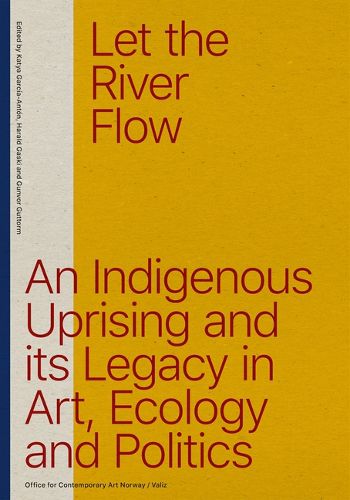Readings Newsletter
Become a Readings Member to make your shopping experience even easier.
Sign in or sign up for free!
You’re not far away from qualifying for FREE standard shipping within Australia
You’ve qualified for FREE standard shipping within Australia
The cart is loading…






On an exemplary case of Indigenous and non-Indigenous conflict and its legacies
The People’s Action against the Nordic Alta-Guovdageaidnu Waterway (c. 1978-82) radically shook the course of history in the region. Its call to let the river live clamored against the construction of a large dam across the Alltaeatnu river in Norway. The action grew to an unexpectedly broad movement of solidarity across civil society–Sami and Norwegian, as well as Indigenous and non-Indigenous peoples internationally–in which Sami artists played a pivotal role.
Let the River Flow takes this eco-Indigenous rebellion, the first in Europe and inspirational worldwide, to reflect on events at the time and their correlations with international artists’ eco actions today. It is conceived as a reader, and addresses innovations in political organizing, new influences of Indigenous thinking on contemporary politics and the centrality of artists within the constellation of these activities. It also considers other Indigenous artists’ protests that happened in parallel to the actions mentioned.
$9.00 standard shipping within Australia
FREE standard shipping within Australia for orders over $100.00
Express & International shipping calculated at checkout
On an exemplary case of Indigenous and non-Indigenous conflict and its legacies
The People’s Action against the Nordic Alta-Guovdageaidnu Waterway (c. 1978-82) radically shook the course of history in the region. Its call to let the river live clamored against the construction of a large dam across the Alltaeatnu river in Norway. The action grew to an unexpectedly broad movement of solidarity across civil society–Sami and Norwegian, as well as Indigenous and non-Indigenous peoples internationally–in which Sami artists played a pivotal role.
Let the River Flow takes this eco-Indigenous rebellion, the first in Europe and inspirational worldwide, to reflect on events at the time and their correlations with international artists’ eco actions today. It is conceived as a reader, and addresses innovations in political organizing, new influences of Indigenous thinking on contemporary politics and the centrality of artists within the constellation of these activities. It also considers other Indigenous artists’ protests that happened in parallel to the actions mentioned.